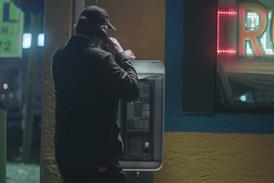Tape cameras are being phased out and sales of tapeless systems are booming, but are the cost- and time-saving claims made for them justified, asks Adrian Pennington.
Sales of tapeless camcorders are, for the first time, outstripping those of traditional cameras as more producers remove tape from their workflow. Yet it has taken longer than expected for the cost- and time-saving benefits of file-based production to filter through to generic broadcast programming, and confusion remains about the true price of the different formats.
Figures from Futuresource Consulting for April to June reveal that sales of non-tape acquisition comprised the majority (50.84%) of all European professional camcorder sales. No one doubts that tapeless technology is the future, but the market has been slow to move since its mainstream introduction in 2004.
“The early adopters were small outfits that could see straightaway where they were saving time,” says Duncan Martin, co-founder of hire firm ProMotion, which this year upped its tapeless camera fleet from four to 20 to meet demand. “Larger companies had additional hoops to go through to make a buying decision.”
Jaume Rey, Panasonic’s director of provideo and broadcast IT systems, Europe, believes the recession has focused buyers’ attention. “People are worried that if they don’t buy solid state, they’ll be left behind. When access to finance is so hard, investments must last longer.”
Cutting costs
Manufacturers and resellers have consistently argued that IT-based production is a money-saver. Shooting to a non-tape media should, in theory, allow instant access to a video file, slash the time required to transfer rushes onto an edit platform and get the creative process moving faster. Cumbersome and expensive dubbing off to tape between stages in the post cycle is a thing of the past. What’s more, material stored on a server can be reused more conveniently than shelves of hand-labelled tape.
“There’s a huge saving in stock costs because, traditionally, tape is used once and shelved, whereas memory cards can be used thousands of times,” says Mitcorp business development manager Dennis Lennie. For example, he says a major reality production was spending £10,000 a month just buying tape stock. “Then there’s the hidden cost of archive, which takes up space and might cost 15p a box per day. That can add a massive chunk to the budget and impact on the spend for future productions.”
So while solid state media can be up to £800 for a single card, Lennie challenges the idea this kind of upfront investment makes tapeless acquisition the more expensive option.
Rey agrees it’s an issue of perception. “This has hit us very hard. When a customer says the card is very expensive that’s because we have failed to properly explain that you buy once and use it forever to considerably reduce the total cost of ownership.”
Tapleless camcorders
JVC
GY-HM700
Description Shoulder-mounted with three 1.3-inch sensors. Records HD at 35Mbps. A handheld version costs £2,850. Features native recording to QuickTime files for rapid transfer to Apple Final Cut Pro
Media SDHC cards. 16GB (£30) or 32GB (£50) for 100 mins HD
Price £6,350
Panasonic
AG-HPX301
Description 1/3-inch chip, shoulder-mounted model that records DVCPRO HD at 100Mbps using AVC Intra compression
Media P2 cards. 16GB (£266), 32GB (£400). A 64GB (£640) card will record 60 mins HD
Price £8,500. There are eight P2 cameras, ranging from the £4,000 HVX201AE to the £30,000 HPX2700, which features variable frame rate recording and five card slots for continuous five-hour recording
Sony
PMW-EX3
Description Semi-shoulder camcorder fitted with three 1/2-inch CMOS sensors, a 35Mbps frame rate, interchangeable lens mount and two memory card slots
Media SxS PRO cards. 16GB (£500), 32GB (£800). A pair of 16GB cards can record up to 140mins of HD
Price £6,500. The handheld fixed-lens EX1 retails for £4,500
Sony
PDW-700 XDCam HD 422
Description Records HD at up to 50Mbps from three 2/3-inch CCD sensors
Media 50GB Dual Layer Professional Discs (£35)
Price £20,000
Note All prices approximate
Rental costs for HD tapeless acquisition are now competitive with tape. HDCam can be hired for £450 per day compared with a Sony XDCam HD for £400 and a high-end P2 camera at £450, including lenses, power and tripod. An EX3 is typically around £150, £100 cheaper than the SD of DigiBeta. However, since rental firms have long recouped their investment in tape kit, some are offering prices that undercut the new technology. Moreover, broadcasters may still specify tape or request SD for productions such as returning series, with little incentive for producers to switch their approach.
Not all tapeless camcorders are accepted by broadcasters for HD work either. Discovery, for example, has a gold, silver and bronze of minimum acceptable standards based on size of the camera’s chip, compression quality and data rate.
“It’s frustrating that manufacturers have made cameras to the required spec but it’s taken broadcasters a long time to OK them,” says Martin, hinting that these stringent rules may soon be relaxed.
Trust issues
Perhaps the biggest barrier to tapeless adoption has been a widespread perception that IT systems can’t be trusted. “People are only beginning to feel comfortable sharing and deleting files now that solid state media, from video on-demand to iTunes, becomes more culturally familiar,” says Rey. “To the younger generation, it’s obvious you don’t shoot to tape.”
What’s needed is confidence in storing precious rushes in a non-physical form. “Because they have to wipe everything from the recording media [in order to reuse it], people are so nervous that they back up the same files multiple times, incurring extra storage costs,” says TwoFour Digital head of post-production Rick Horne, who is managing the tapeless workflow for new ITV series Road Warriors.
“If you have a small self-contained project, you couldn’t design a more perfect route than file-based,” he adds. “Where there are multi-cameras on multi-day shoots with multi-editing suites, tapeless is often not as immediate, elegant or budget-friendly as manufacturers and hire companies like to spin that it is.”
CASE STUDY
TAPELESS THAMES
Talkback Thames moved The Bill from Digibeta to HD in February, retaining the Thomson LDK 8000 Elite cameras but recording 90 minutes a day onto P2 AVC Intra portable recorders.
“We recycle the cards every three days and delete the rushes after transmission,” explains technical operations manager Martin Williams. “Importing material is quicker than tape but we then have to back it up, an extra procedure, which adds time.”
Williams also advised on switching the format of The Apprentice for its sixth series.
XDCam HD disc was chosen because it offered HD with the benefits of fast review during the edit and also because it proved cheaper than IT storage as an archive media. “Because we don’t know who will win or which candidate may become famous a few years from now, we retain a huge volume of material,” he says. “Our operators like disc because they can work with it as if it were tape. IT is not only expensive but uses energy, when as a company we are trying to go green.”
Switching to tapeless is not as simple as buying a new camera. In order to transfer files across to an NLE, facilities may need new video players and hard-disc readers capable of handling the new formats. To ensure instant access to rushes in the system some form of nearline storage is required - investments that need thinking about carefully in the current climate. “Tapeless really saves where the camera format has a seamless workflow with the edit environment,” explains Onsight facilities manager Tony Maher.
“It’s much more complicated if you have to wrangle data formats across different types of edit system.”
Horne agrees. “Each camera shoots to its own codec and own particular file format, all of which needs unpicking before entering the offline environment and then re-imported or conformed for online. That can throw up all sorts of problems.”
One of the alleged advantages is that file workflows can radically shorten the time required to digitise and sort through high volumes of rushes. “It’s fine in theory but you still need to pay someone to manually log all the rushes,” says Horne.
Some camera hire companies may not be able to give advice on how to get the rushes stored on a camera’s media into a post environment. “You can’t push the kit without knowing the implications,” warns Horne.
Luckily, hire shops such as Hammerhead, Onsight, ProMotion and Mitcorp offer dedicated support teams to troubleshoot productions.
“Most hire companies have the same kit so to add value we run tutorials and training workshops to help transition operators from tape,” says Martin.
Because existing workflows are so familiar and there is so much VT archive that can be recut into new productions, tape is going to be a fixture for a long time.
However, “the tapeless tipping point has finally arrived,” says Rey. “What’s the point in choosing a tape-based format when tape is in decline?”


























No comments yet